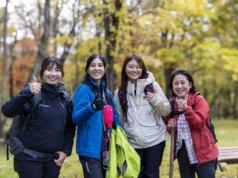If you’re looking for a deeper connection to nature, you need to visit the world’s most remote and stunning locations.
The answer: learning how to start overlanding. This extended vacation requires considerable planning and packing, so your preparation is well worth the time and effort.
Here’s our guide on how to start overlanding.
Here’s an overview:
What Is Overlanding?
First, it’s essential to distinguish overlanding from other outdoor adventures. This activity entails driving in remote locations and relying on yourself for survival.
Overlanding encourages taking the roads less traveled and making your way within national parks and other recreational areas.
What is the history of overlanding? The remote travel method became more prominent as car usage spread, considering people wanted to drive and explore.
In the 20th century, overlanding became necessary in countries like Australia. The Outback may take you 1,000 miles away from human habitations, so you must rely on yourself to make these trips.
How to Plan an Overlanding Trip
Overlanding can change your life and provide new perspectives. However, it requires preparation to ensure your safety and enjoyment.
Here are seven tips on how to start your next overlanding adventure.
1. Determine the destination
First, you should determine your destination. The world offers plenty of beautiful and remote locations, so choose wisely based on your preferences and budget.
The most accessible options might be within your country, considering you won’t need a passport or visa. If you choose international travel, check your passport expiration date and start any application processes early.
Common overlanding destinations include deserts and mountains because you can find consistent solitude. You may encounter the occasional traveler, but you’ll often be alone.
Outdoor enthusiasts gravitate toward national parks because of their lenient overlanding policies. However, it’s best to check the rules of any location.
Related read: The Ultimate Collection of Road Trip Tips
2. Research before you go
Preparation is critical for overlanding because you rely on yourself for survival. While adapting to your destination is crucial, you can help your crew with research.
For instance, what is the regional climate? If you go overlanding in a desert, you might be surprised to feel the temperature dips at night.
Therefore, you must bring warm and cold weather clothes to stay comfortable throughout the trip. Your research should also include what documentation you need, especially if you cross borders.
International overlanding means you’ll find people from other cultures. Learn the customs and social norms to fit in as much as possible.
3. Pack your overlanding gear
The most important part of overlanding might be the gear you bring. You’ll need enough supplies to last your trip, whether for two weeks in the mountains or a month in the desert.
Your packing list starts with camping gear. Overlanding involves living in your vehicle, so pack tents and sleeping bags to rest under the stars.
While you might not be around people, you must maintain good hygiene. Experts recommend bathing two or three times weekly. Consider bringing portable showers, and remember your toothbrushes.
Make room on your packing list for an emergency kit because you’ll be far from the nearest healthcare facilities. This first-aid pack should include personal protective equipment (PPE), over-the-counter medications, bandages and other necessary supplies.
4. Bring backup options
Some people minimize their technology while overlanding to maximize their outdoor connection. However, others have it by their side to make the trip easier.
Regardless, it would help to have backup options in case your phone loses signal. Relying on technology might not be wise in the most rural areas.
For example, you should obtain paper maps of the terrain you explore. Get the most updated version to account for new roads and trails.
Additionally, prioritize basic navigational tools like compasses. With these gadgets, you have a better chance of finding your way out if you get lost.

5. Consider your nutritional needs
When overlanding, you probably won’t find fast-food restaurants or fine-dining establishments. You’re on your own to provide your breakfast, lunch and dinner.
Your first option is to bring non-perishable food from home. Pack bags full of nuts, nut butter, dried fruit, jerky and canned food to satisfy your nutritional needs.
If you want to prepare food, bring a camp stove or similar tools. Modern devices have become more portable through battery and solar power.
Prepackaged food will help you survive, although you can often hunt and forage for your meals. Fishing could be suitable if your trip is near bodies of water.
6. Drive overland vehicles
Next, you should consider what vehicles you can bring on your overlanding journey. Your shortlist should include off-road-ready vehicles like trucks, SUVs and crossovers.
Overland enjoyers use Toyota 4Runners, Ford Rangers, Chevrolet Colorados and other models with solid reputations.
Regardless of preference, your vehicle should have high ground clearance to cover rocks and other rugged terrain.
The vehicle also needs a reputation for durability because you won’t be close to service centers. This distance means you should prepare your vehicle before heading out.
7. Ensure vehicle readiness
Your rig is fundamental to overlanding, so it’s necessary to ensure it’s ready for the long trip. This preparation could mean upgrading your vehicle and giving it special attention.
For instance, perhaps your suspension could benefit from a lift kit to protect it from rocks and obstacles. Another upgrade idea is a more powerful battery for your camping amenities.
Before overlanding, consider your vehicle’s payload and towing capacities. Check your owner’s manual to see the needs of your specific model.
If you bring an overlanding trailer, research your vehicle’s tongue weight for better safety. Experts say it should be 10%-15% of the total trailer weight, so use a tongue weight scale to measure it.
What Locations Are Best for Overlanding?
Overlanding can take you to some of the most beautiful places many people don’t get to see. If you’re wondering how to pick an overlanding destination, here are five places to start.
Related read: Top Road Trips You Need to Make and the Cars to Make Them In
1. Simpson Desert

If you’re up for a challenge, head to the Simpson Desert in central Australia. This large, open terrain is for outdoor enthusiasts who want to see the Land Down Under in its purest form.
The Simpson Desert is 176,500 kilometers across three territories and is the country’s largest national park. Water is hard to come by, so bring plenty for hygiene and hydration.
Drive across this massive desert to see tiny towns and their unique cultures. For instance, Coober Pedy is a must-see for overlanders because of its dugout homes.
The drive includes numerous dunes, so regularly clean your vehicle’s undercarriage to remove sand.
2. Cotopaxi National Park
National parks are excellent for overlanding because of their protected areas. Cotopaxi National Park in Ecuador fits the bill for a South American experience.
Cotopaxi National Park has some of the tallest active volcanoes worldwide, offering thrills and dangers. Admission and camping are free, which is great for travelers on a budget.
In addition to volcanoes, there are grasslands and forests with unique wildlife viewing and hiking opportunities. Acclimating to the elevation could be difficult, so give yourself time to adjust.
Before traveling, check the requirements upon entering the country. Ecuador requires a visa for stays over 90 days and an application from specific nations.
3. Gobi Desert
Overlanding in a desert doesn’t always mean hot temperatures. The Gobi Desert’s chilly terrain presents unique opportunities for outdoor enthusiasts.
This extensive terrain covers southern Mongolia and northern China, with plenty of grasslands and dunes to explore.
If you travel to the Gobi Desert, prepare for the harsh winds and dust storms. Don’t be surprised to encounter gusts as powerful as a hurricane.
Much of the Gobi Desert remains untouched, so it’s among the best overlanding destinations for those wanting to disconnect from the regular world.
4. Victoria Falls
Africa is full of natural beauty and numerous overlanding opportunities, but it’s hard to compete with the road to Victoria Falls and its marvelous sites.
This trek requires driving through Zambia or Zimbabwe, as the waterfall marks the border between the two countries. Travel through Zimbabwe and the Zambezi National Park for a once-in-a-lifetime adventure.
This sizable recreational area includes elephants and lions in their natural habitats — creatures you may otherwise only see in zoos.
If this is your first overland trip, consider hiring a professional guide to help you navigate the complex roads, wildlife and border crossings.

5. The Grand Canyon
The Grand Canyon is one of America’s most breathtaking sites available to overlanders. Head to the North Rim for a fun challenge with your overlanding vehicles.
The South Rim is where you’ll find most tourists and daytrippers. However, the northern section is more remote, with its primitive campgrounds and demanding trails.
Regardless of the side, there are numerous trailheads and camping spots for your vehicle. Bright Angel, Bridle and the North Kaibab Trail headline this national park.
Around Grand Canyon National Park, you can explore the Parashant National Monument and the Kaibab National Forest. Check out the Tuweep campground for your overnight stays.
Related read: The Best Trails For Hiking in Utah’s National Parks
How to Start Overlanding in Nature’s Finest Locations
Overlanding is excellent for exploring nature and getting to know your planet. If your next trip is your first time, ensure you have the proper overlanding gear, vehicle and trailer to make it easier.
The overlanding opportunities span each continent, as you’ll find pristine, untouched landscapes for your adventures. While the land is beautiful, you’ll be far from shops and service centers.
Preparation is vital to overlanding, so prioritize research and readiness for yourself and your crew.










